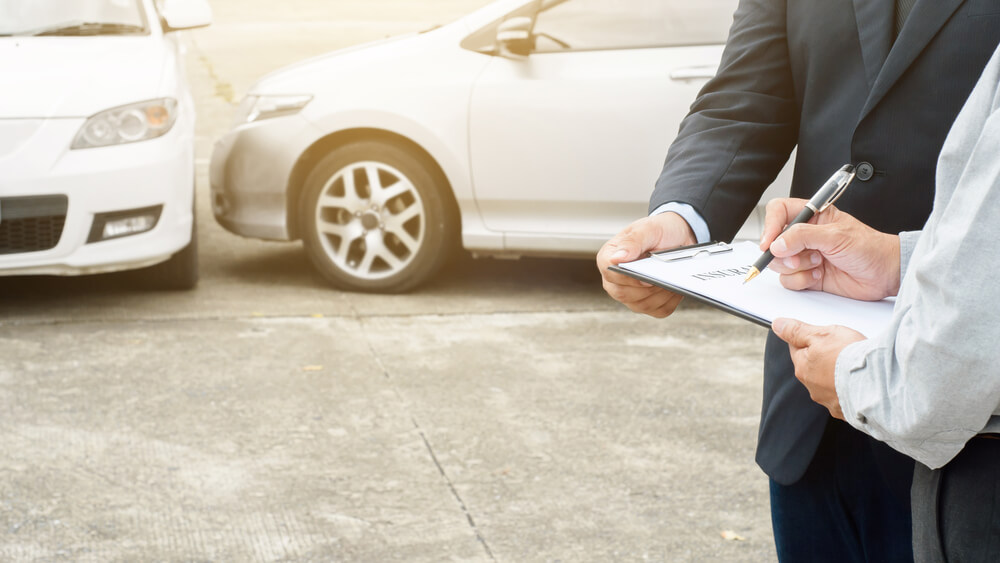Rear-Ended by a Semi-Truck: What to Do and Who to Sue
A rear-end collision is unsettling enough when it involves two standard vehicles. But when the vehicle behind you is a fully loaded semi-truck—often weighing up to 80,000 pounds—the consequences can be devastating. These incidents frequently result in catastrophic injuries, significant property damage, and complicated legal questions about liability.
If you’ve been rear-ended by a semi-truck, the path forward may feel unclear. Who should be held responsible? What steps should you take to protect yourself and your right to compensation? And how does the legal process actually unfold?
This guide will walk you through everything you need to know—from the immediate actions to take after the crash to the process of holding the responsible parties accountable.
Why Rear-End Collisions with Semi-Trucks Are So Dangerous
Semi-trucks pose unique dangers on the road due to their massive size and limited maneuverability. Unlike passenger vehicles, they require a much greater stopping distance. When a truck driver fails to brake in time—or brakes too late—the vehicle in front often bears the brunt of a high-force impact.
Injuries commonly seen in these cases include:
-
Whiplash: Caused by the sudden jerking motion of the head and neck, leading to strain and chronic pain.
-
Traumatic Brain Injury (TBI): A collision’s impact may lead to concussions or more severe brain injuries, often requiring long-term care.
-
Spinal Cord Injuries: These may range from herniated discs to permanent paralysis.
-
Broken Bones: Arms, ribs, legs, and facial bones are frequently fractured in high-impact crashes.
-
Internal Organ Damage: Less visible but often life-threatening, these injuries demand immediate medical attention.
Beyond the physical trauma, victims may also suffer emotional distress, financial instability due to lost wages, and the strain of ongoing medical care. Understanding what to do immediately after a crash is critical.
Step-by-Step: What to Do After Getting Rear-Ended by a Semi-Truck
Step 1: Prioritize Safety and Call Emergency Services
Your first priority should be safety. If your vehicle is operable, move it to the shoulder or a safe area away from traffic. Turn on your hazard lights and check for injuries.
-
Call 911 immediately, regardless of how minor the injuries may appear. A formal police report will be essential later, and emergency medical personnel can assess and document your condition.
Step 2: Seek Immediate Medical Attention
Even if you feel “fine,” seek medical evaluation. Many serious injuries—such as internal bleeding, concussions, or whiplash—may not present symptoms until hours or days after the crash.
-
Visit an emergency room or urgent care as soon as possible.
-
Follow all medical instructions and attend follow-up appointments.
-
Keep detailed records of all diagnoses, treatment plans, prescriptions, and medical bills.
This step is not just for your health—it also creates a paper trail for any potential personal injury claim.
Step 3: Document the Scene
If you’re able, take proactive steps to preserve evidence at the crash scene.
-
Photograph everything: The position of the vehicles, road conditions, license plates, skid marks, and visible injuries.
-
Collect contact info: Get names, phone numbers, insurance information, and employer details from the truck driver. Also collect names and numbers from any eyewitnesses.
-
Request the DOT number: Every commercial truck must display a Department of Transportation number, which can be useful in tracking down vehicle ownership and compliance history.
Step 4: Do Not Admit Fault
In stressful moments, many accident victims instinctively apologize—even if they did nothing wrong. Avoid statements that could be misinterpreted as an admission of fault.
Let the investigators determine what happened. Anything you say may later be used to diminish your claim.
Gathering Evidence: The Foundation of Your Legal Claim
After the immediate chaos subsides, it’s time to focus on building your case. Strong documentation is essential.
Obtain the Police Report
Request a copy of the report as soon as it becomes available. It will include critical information about the crash, statements from both parties, and the officer’s initial assessment of fault.
Preserve All Medical Records
Organize all paperwork related to:
-
Hospital visits
-
Diagnostic tests (X-rays, MRIs, CT scans)
-
Physical therapy
-
Out-of-pocket expenses
-
Prescriptions and specialist referrals
This documentation serves to quantify your damages, which is central to a personal injury claim.
Keep a Post-Accident Journal
In the days and weeks after the crash, track your pain levels, emotional state, and how the accident has disrupted your daily life.
-
Are you unable to work?
-
Has your mobility been impacted?
-
Are you experiencing anxiety, insomnia, or depression?
Your journal can support claims for non-economic damages, such as pain and suffering.
Gather Witness Statements
If any bystanders witnessed the crash, their statements can strengthen your case—especially if liability is disputed. Ideally, these witnesses should be documented in the police report, but you should also follow up independently when possible.
Determining Liability: Who Can You Sue?
Liability in a semi-truck accident is not always straightforward. There may be multiple parties responsible for the crash—and for compensating you.
The Truck Driver
If the driver was distracted, speeding, fatigued, under the influence, or violating any traffic laws, they may be held directly responsible. Federal regulations limit the number of hours a driver can be behind the wheel, and logbooks can help establish whether those rules were violated.
The Trucking Company
If the driver was on duty, the employer may share liability. This is especially true if the company:
-
Failed to properly vet or train the driver
-
Pressured the driver to meet unrealistic delivery times
-
Failed to maintain the truck or comply with safety regulations
The Maintenance Contractor
If the accident resulted from brake failure, tire blowout, or other mechanical problems, the party responsible for maintaining the truck could be liable.
The Truck Manufacturer
In rare cases, a defective part—like a faulty air brake system or steering column—may have contributed to the crash. This could make the manufacturer or parts supplier partially responsible under product liability law.
Another Driver
It’s possible that another vehicle triggered a chain reaction that led the semi-truck to strike your car. If that’s the case, that third-party driver could also share legal responsibility.
Comparative Negligence: What If You’re Partially At Fault?
Georgia, like many states, follows a modified comparative negligence rule. If you are found to be less than 50% at fault, you can still recover compensation—but your award will be reduced proportionally.
For example:
This makes it especially important to avoid admitting fault and to work with a skilled attorney who can present the strongest version of your case.
Filing a Personal Injury Claim
To initiate a personal injury claim, it’s essential to understand your legal options and be strategic in your approach.
Work with a Personal Injury Attorney
A trucking accident claim involves complex regulations—including federal Department of Transportation rules, commercial insurance policies, and state traffic laws. Your attorney can:
-
Investigate the crash
-
Identify liable parties
-
Work with accident reconstruction experts
-
Handle communications with insurers
-
Maximize your compensation
What Compensation Can You Recover?
Depending on the circumstances, you may be eligible for:
-
Medical expenses (past and future)
-
Lost income and reduced earning capacity
-
Loss of enjoyment of life
-
Property damage
-
Punitive damages (in cases of gross negligence or willful misconduct)
Negotiating a Settlement
Insurance companies often offer initial settlements far below what your claim is worth. An attorney will evaluate any offer and negotiate aggressively for full compensation.
If negotiations fail, your attorney can file a lawsuit and take the case to court.
Conclusion: Your Rights, Your Recovery, Your Representation
A rear-end collision with a semi-truck can shatter your sense of safety, your health, and your livelihood. But with the right steps—and the right legal counsel—you can reclaim your footing and seek the justice you deserve.
From the crash scene to the courtroom, every detail matters. Documentation, medical care, legal representation, and a full understanding of liability will define your ability to recover physically and financially.
At 770GoodLaw, we understand the challenges truck accident victims face. Let us shoulder the legal burden so you can focus on healing. Our experienced attorneys will work tirelessly to secure the compensation you’re entitled to.
Call us today at (770) 214-4309 for a free consultation.
You don’t have to go through this alone.
Accident?
Our team of experienced car accident professionals is ready to help you assess your case and fight for the compensation you deserve. Don’t let the negligence of others dictate your future–let us be your advocate in this challenging time. Contact us today at 770Goodlaw.








